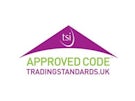When it comes to buying or selling property in the UK, a completion statement is a vital document that both parties to the transaction will receive. It is a summary of all the financial transactions involved in the sale, from the purchase price to the fees and taxes involved.
In this article, we will look at what completion statements are, when they are received, what they typically contain, and some variations you might come across.

What is a Completion Statement?
A completion statement is a document that sets out the financial transactions that occur when buying or selling property. It is usually prepared by the solicitor or conveyancer who handles the legal aspects of the sale. It is important to note that a completion statement is not the same as a mortgage statement, which shows the balance of your mortgage.
When are Completion Statements Received?
Completion statements are typically received on the day of completion, which is the day when the legal transfer of ownership takes place. This is after contracts are exchanged, which is when both parties become legally bound to the sale. The completion date is agreed upon by both parties, it can be the same day as the contract exchange, it can be on a set date after and it can be any working day of the week.
What Does a Completion Statement Contain?
Completion statements can vary slightly depending on the solicitor or conveyancer, but they will generally contain the same information. Here are some of the things you can expect to find on a completion statement:
- Purchase Price
The purchase price is the amount that the buyer is paying for the property. This will be listed on the completion statement, along with any adjustments that have been made to the price, such as deductions for repairs or improvements.
- Deposit
The deposit is the amount of money that the buyer has paid upfront to secure the purchase of the property. This will be deducted from the total purchase price on the completion statement.
- Mortgage Advance
If the buyer has a mortgage, the mortgage advance is the amount of money that the lender has provided to the buyer to help fund the purchase. This will be listed on the completion statement.
- Fees
There are a variety of fees involved in the purchase or sale of a property, and these will be listed on the completion statement. Some common fees include conveyancing fees, land registry fees, and search fees.
- Taxes
There are also a variety of taxes involved in property transactions, and these will also be listed on the completion statement. The most common tax is stamp duty land tax, which is payable on properties that are worth more than £125,000 (if this is your sole residence £40,000 if it is your second home)
- Balance
The balance is the amount of money that the buyer must pay to complete the purchase. This is calculated considering the deposit, mortgage advance, fees, and taxes from the purchase price.
Variations of Completion Statements
While completion statements generally contain the same information, there can be some variations depending on the circumstances of the sale. Here are some examples of variations you might come across:
- Transfer of Equity
If the property is being transferred between family members or friends, rather than sold on the open market, the completion statement may only show the transfer of equity. This is the amount that the new owner has paid to take over a share of the property.
- Shared Ownership
If the property is a shared ownership property, the completion statement may show the amount that the buyer has paid for their share, rather than the total purchase price of the property.
- Leasehold Properties
If the property is a leasehold property, there may be additional fees and charges that are specific to leasehold properties. These will be listed on the completion statement.
- New Builds
If the property is a new build, there may be additional fees and charges associated with the purchase, such as service charges for communal areas. These will also be listed on the completion statement.
A completion statement is a crucial document that provides a clear breakdown of all the financial transactions involved in the sale or purchase of a property in the UK. It ensures that both parties have a clear understanding of the costs involved and helps to avoid any confusion or disputes.
It is important to review the completion statement carefully and raise any questions or concerns with your solicitor or conveyancer. This will help to ensure that all the details are accurate and any issues can be resolved before the transfer of ownership takes place.






